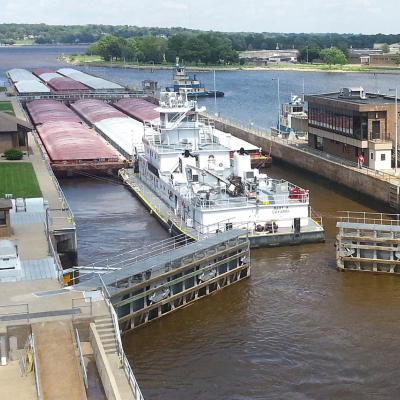The Upper Mississippi is an essential component of the nation’s land-based transportation network, serving as a vital link in the nation’s multi-modal transportation system and relieving congestion on roads and rail. The river is critical to local, regional, and national economies for its ability to efficiently move bulk commodities at a competitive price, including 60 percent of the nation’s grain exports as well as road salt and gravel.
Commercial navigation is made possible by a series of 29 lock and dams on the Upper Mississippi, mostly built in the 1930s, and eight lock and dams on the Illinois River. Collectively, these locks, along with active channel maintenance, provide a reliable 9-foot navigation channel. While there are many trends and issues affecting the viability and efficiency of the nation’s inland waterway system, perhaps none is more significant than the overall decline in federal infrastructure investment since the mid-1980s. Several recent economic analyses have concluded that a closure of the river channel over a long duration (e.g., navigation season) would severely affect the Midwest economy, particularly impacting Midwest agricultural producers.




